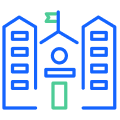How to make smarter decisions when buying edtech software
Schools keep spending and spending money on education technology. In 2013, they wrote checks totaling more than $8 billion for things like computer hardware, tablets, learning software and internet connectivity, with the numbers growing each year.
Too bad some of that technology never gets used.
In some schools, new tablets sit stacked in storage closets and learning applications go unopened. Why do they gather dust while other schools deploy those products right away?
Some blame teachers who are averse to technology. Others blame the entire edtech category, claiming much of it doesn’t improve outcomes. Both accusations are not just wrong, they oversimplify a complex issue.
The reality – one that educators know all too well – is that the technology selection, procurement and rollout decisions in today’s school districts are often made without the awareness or involvement of all stakeholders.
According to Teachers Know Best: Making Data Work For Teachers and Students from the Bill & Melinda Gates Foundation, 93% of teachers regularly use digital tools, but 67% aren’t satisfied with them. The latter statistic would likely be much lower if teachers were involved in buying decisions. After all, if they’re the ones who will use the technology every day, they’re the most qualified to know which tools will support their objectives.
My colleague, Liz Allen, is a former teacher and has firsthand experience with this issue.
“As a teacher, it’s difficult and time-consuming to learn about new software. Professional development breakout sessions, TED-style introductions to new software, and conference floor walk-throughs would help teachers learn about technology. But the real problem is getting teacher feedback to district decision makers. There needs to be some sort of feedback loop for the teacher’s voice. Even more, get student feedback as well.”
Districts should also think through budgetary planning. Consider long-term licensing needs as well as future costs for support, network and hardware upgrades, maintenance and training. To prevent missteps, districts actually might want to overestimate tech needs when possible. For more success, try a small amount of well-funded projects instead of a large number of improperly funded efforts.
On that note, get early buy-in and sponsorship from senior administration. A critical factor for the initiative to succeed, executive support helps to secure sufficient resources, establishes the project as a priority, and boosts the likelihood of a proper evaluation. The more rigorous the testing, the better the chances of uncovering and addressing compatibility issues before purchase or implementation.
But districts can’t have a successful implementation if teachers aren’t sufficiently trained. Most districts provide training, but in some cases it isn’t enough. In a recent Pew Research Study, 10% of teachers said “I am not comfortable teaching with technology (including inadequate training).” 10% may not seem bad, but when you consider that we have about 3 million public K-12 teachers, that’s essentially 300,000 teachers without adequate technical training.
Without preparing teachers to properly use digital tools – even those who have been part of the purchasing process – enthusiasm will quickly erode and, in turn, use of the technology will decrease (or not even begin).
With all that said, the edtech industry needs to step up as well. Many teachers feel that products are being created to solve perceived problems rather than real problems. Collectively we need to better align solutions with actual teacher needs.
That means building software that simplifies data management and minimizes the need for manual data entry. As the Gates report says, it also means “developing tools that do not just report what has happened, but also use current and historical performance data to anticipate student learning trajectories and personalize instruction based on each student’s performance.” We need to build with open standards, APIs, and common file formats to promote interoperability so products can share information.
As more edtech companies see the light, we’ll be able to deliver more relevant software, increasing use by teachers and students and improving the educational experience for everyone. Those have always been the only reasons to be in this business.

More to read

December 23, 2025
End password chaos: The 5-step guide to secure, age-appropriate logins in schoolsSchool IT departments — take these 5 steps to offload the burden of manual password resets while improving cybersecurity for classrooms.
December 10, 2025
Wonde vs. Clever: 2025 Side-by-Side ComparisonWhen it comes to choosing the right edtech platform for your school or trust, there’s a lot to consider. Can it sync reliably with your Management Information System (MIS)? Support secure logins for every user, on every device? Scale across multiple schools without overloading your IT team? Wonde and Clever are two of the most […]

October 21, 2025
Stop the Sticky Notes: Bend-La Pine’s Simple, Secure Fix for Substitute Teacher AccessRobbie Faith, an instructional technology coach at Bend-La Pine Schools, successfully implemented a Clever feature to streamline secure access to digital resources for short-term substitutes, leading to more effective sub planning for teachers, increased confidence for subs, and more consistent learning for students.


















